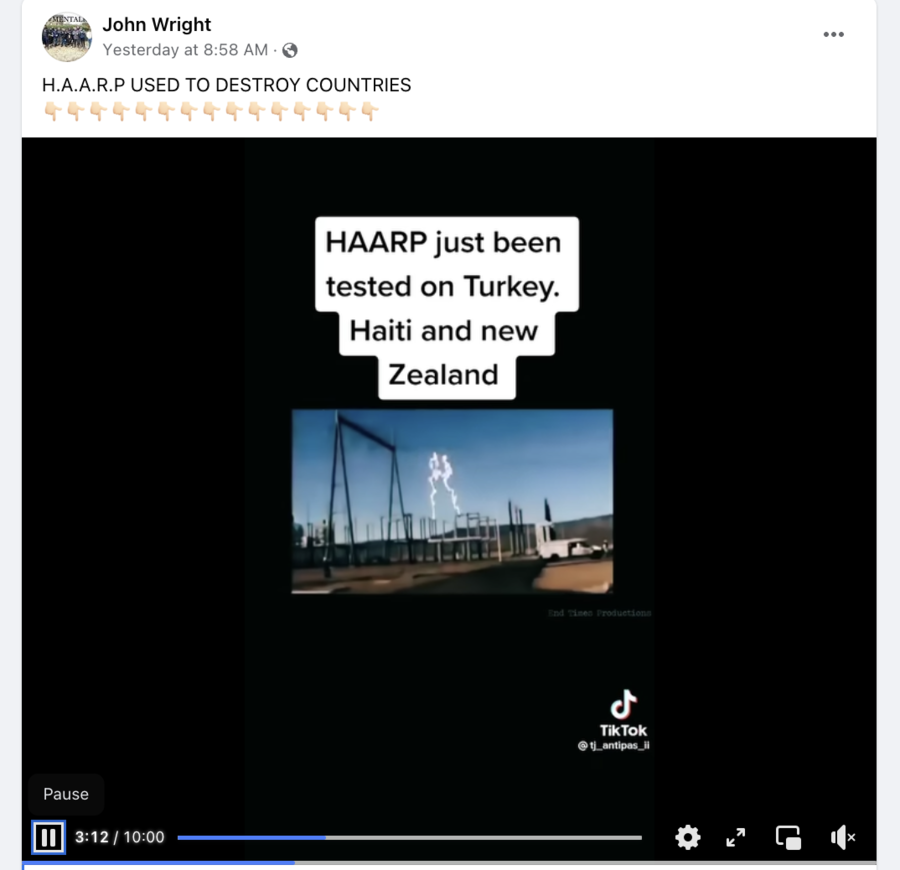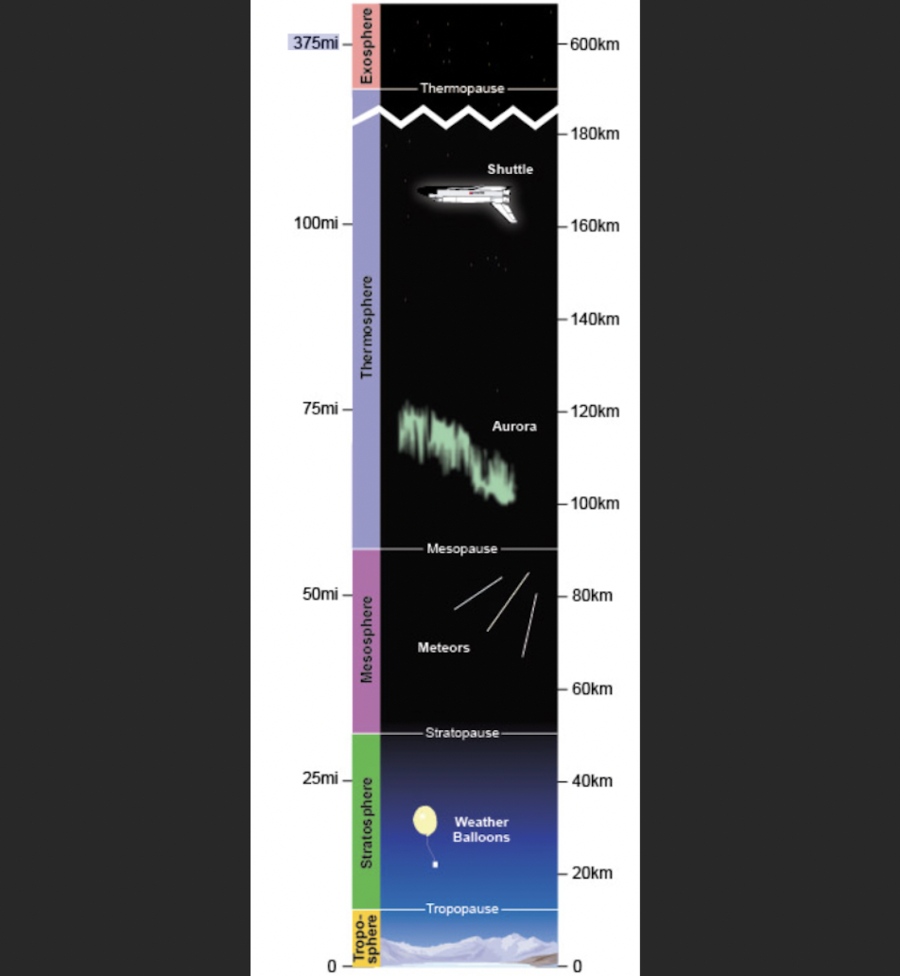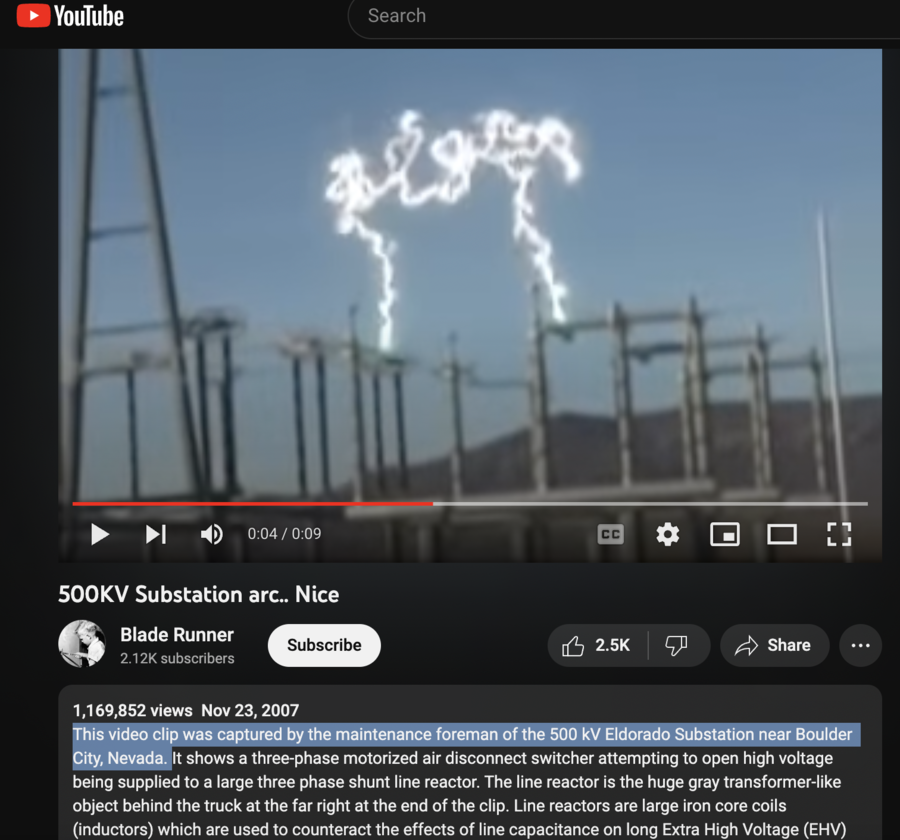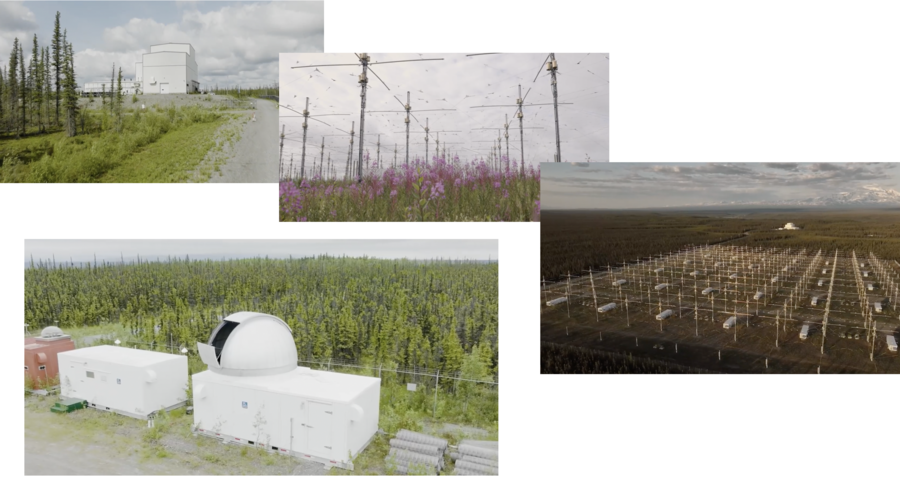STORY UPDATED: check for updates below.
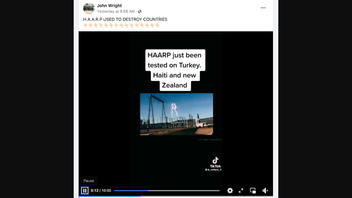
Can the Alaska-based HAARP project, a former military research facility for studying the ionosphere, remotely initiate natural disasters such as earthquakes anywhere on Earth? No, that's not true: An "explanation" of its purported capabilities to manufacture disasters, posted on social media, contradicts well-established scientific facts. The manager of the HAARP project told Lead Stories that the facility "cannot create or amplify natural disasters."
The claim appeared in a video from TikTok reposted on Facebook on February 21, 2023, with the caption:
H.A.A.R.P USED TO DESTROY COUNTRIES
👇👇👇👇👇👇👇👇👇👇👇👇👇👇👇
At the 3:07 mark, the narrator said:
They do it by shooting a billion-watt microwave into the ionosphere which is a part of the atmosphere that has a lot of energy that pushes the ionosphere up into outer space and then it rebounds, and the way it rebounds can cause earthquakes. Just like an opera singer can break a glass by singing at a certain level or by dragging your fingernails on a blackboard. You feel a weird sensation. If they adjust the vibration for the rock underneath their target site, they can do that.
This is what the post looked like on Facebook at the time of the writing of this fact check:
(Source: Facebook screenshot taken on Wed Feb 22 21:37:39 2023 UTC)
The video, first posted on YouTube in March 2011, is narrated by a Canadian named Benjamin Fulford. In the early 2000s, Fulford was a Forbes journalist, according to the business magazine's site. However, in the years since, critics have charged that he advances conspiracy theories.
HAARP stands for the High-frequency Active Auroral Research Program, developed by the U.S. Air Force in the early 1990s and transferred to the University of Alaska Fairbanks in August 2015 The project's activities are not classified.
The FAQ section of its website explains the purpose of the facility and describes its core means:
The High-frequency Active Auroral Research Program (HAARP) is the world's most capable high-power, high frequency (HF) transmitter for study of the ionosphere. The principal instrument is the Ionospheric Research Instrument (IRI), a phased array of 180 HF crossed-dipole antennas spread across 33 acres and capable of radiating 3.6 megawatts into the upper atmosphere and ionosphere. Transmit frequencies are selectable in the range of 2.7 to 10 MHz, and since the antennas form a sophisticated phased array, the transmitted beam can take many shapes, can be scanned over a wide angular range and multiple beams can be formed.
Using the Ionospheric Research Instrument is not the same as, in Fulford's words, "sending a billion-watt microwave" to "push the ionosphere up into outer space" in order to "adjust the vibration for the rock underneath their target site."
Man-made devices cannot make an entire part of the atmosphere change its location respective to other layers, contrary to what the claim implies. As the National Oceanic and Atmospheric Administration specifies, those layers are not solid physical objects but gas with particular characteristics that change at certain heights above the surface of the Earth:
(Source: Noaa.gov screenshot taken on Feb 24 15:36:09 2023 UTC)
The aurora zone, referenced in HAARP's formal name (High-frequency Active Auroral Research Program), is located within the ionosphere and is a primary area of HAARP research.
The ionosphere occupies lower levels of the thermosphere and consists of electrically charged gas particles. While its size -- another thing implied by the narrator's use of the word "vibrations" -- may grow and shrink, that happens naturally and is based on the amounts of energy the ionosphere absorbs from the sun, not from human-manufactured equipment, NASA writes.
One of the properties of the ionosphere is that it is a volatile, fast-paced environment full of the never-ending movement of particles, and for that reason, it absorbs the effects of HAARP experiments extremely fast, with no further effects on the behavior of the ions or characteristics of the layer. The HAARP website says:
Depending on the height within the ionosphere where the effect is originally produced, these effects are no longer detectable after times ranging from less than a second to 10 minutes.
A good analogy to this process is dropping a stone in a fast-moving stream. The ripples caused by the stone are quickly lost in the rapidly moving water and are completely undetectable a little farther downstream.
The ionosphere is much denser than the atmosphere below it. Therefore, regular radio waves bounce back to Earth as shown in the picture below:
(Source: Noaa.gov screenshot taken on Feb 22 21:00:18 2023 UTC)
In contrast, HAARP waves are designed not to reflect back from the bottom edge of the ionosphere and go above that mark. The intention is "to stimulate the ionosphere and see how it responds, thereby learning more about ionospheric properties," the NOAA's Space Weather Prediction Center commented on February 24, 2023, to Lead Stories.
Since these radio waves don't easily bounce back to the surface of the Earth, they cannot cause "vibrations" beneath the surface that could lead to an earthquake.
The U.S. Geological Survey website explicitly says that it's not an external impact such as the purported vibrations from the atmosphere that causes earthquakes but certain aspects of the constant underground movement of tectonic plates:
An earthquake is caused by a sudden slip on a fault. The tectonic plates are always slowly moving, but they get stuck at their edges due to friction. When the stress on the edge overcomes the friction, there is an earthquake that releases energy in waves that travel through the earth's crust and cause the shaking that we feel.
HAARP studies are not classified, and the facility regularly conducts annual open houses for the public to attend for free. Among the things visitors can see during a 90-minute self-guided tour are "HAARP's control room, power plant, antenna array."
HAARP Program Manager Jessica Matthews told Lead Stories via email on February 23, 2023:
The research equipment at the HAARP site cannot create or amplify natural disasters.
The clip from Facebook reused a series of shots showing an electric discharge, but they did not capture the HAARP facility in Alaska. Those shots were taken from a 2007 video posted on YouTube with a description indicating that the footage showed the Eldorado Substation near Boulder City, Nevada:
(Source: YouTube screenshot taken on Thu Feb 23 17:06:50 2023 UTC)
The HAARP facility does not look like its depiction in the video on Facebook. Here is a variety of screenshots from a video published on the project's official social Facebook page to promote a 2022 open house:
(Sources: Facebook screenshot taken on Thu Feb 23 16:15:15 2023 UTC; Facebook screenshot taken on Thu Feb 23 16:16:13 2023 UTC; Facebook screenshot taken on Thu Feb 23 16:16:33 2023 UTC; Facebook screenshot taken on Thu Feb 23 16:16:53 2023 UTC; composite image by Lead Stories)
Conspiracies about HAARP are not new. Some variations of this narrative include speculations about purported weather modification and mind control. Among those who spread it was former Minnesota Gov. Jesse Ventura, who produced a pseudodocumentary about HAARP, recycling false claims.
One of the earliest examples of the earthquake theme was a statement by Venezuelan President Hugo Chavez, who claimed the 2010 Haiti earthquake was triggered by a U.S.-made "tectonic weapon" that later was substituted with HAARP as the narrative continued to develop. But even the Russian state-owned TV channel RT, which amplified the claim, referred to it as "rumors."
Lead Stories previously debunked a similar claim here.
Other Lead Stories fact checks of claims about earthquakes can be found here.
Updates:
-
2023-02-24T22:39:29Z 2023-02-24T22:39:29Z Adds comments from the NOAA's Space Weather Prediction Center

